
| Template:— representing_value_w_tolerances (rep_val_tol) | Date: 2008/03/10 09:26:28 Revision: 1.25 |
This section specifies the template representing_value_w_tolerances.
NOTE An explanation of a template and the associated instantiation path is provided in the Template overview section.
This template describes how to represent tolerances for any associated a property value.
This can be defined as the upper and lower tolerance limits associated with a particular value and unit.
EXAMPLE The design weight (property) of an item is declared as 35 kilograms and the tolerance associated with that value may allow the weight to increase (+) 0.5 kg, (e.g. to 35.5kg) or to decrease (-) 4.0kg, (e.g. to 31kg).
NOTE The upper and lower values are taken to equate to the traditional +/- (plus and minus) engineering tolerance definition that may be associated with a particular value (and unit). Hence the 'lower' limit should always be negative.


target
is the parameter to which the
Property_value_representation
is bound.
target
is the parameter to which the
Numerical_representation_context
is bound.
| Entity in path | Value | Inherited from |
| Property_value_representation.id | '/IGNORE' | Representation.id |
| Property_value_representation.name | '/IGNORE' | Representation.name |
| Property_value_representation.description | '/IGNORE' | Representation.description |
| Numerical_representation_context.id | '/IGNORE' | Representation_context.id |
| Numerical_representation_context.kind | '/IGNORE' | Representation_context.kind |
| Value_with_tolerances.name | '/IGNORE' | Representation_item.name |
| Value_with_tolerances.upper_limit | @upper_limit | — |
| Value_with_tolerances.lower_limit | @lower_limit | — |
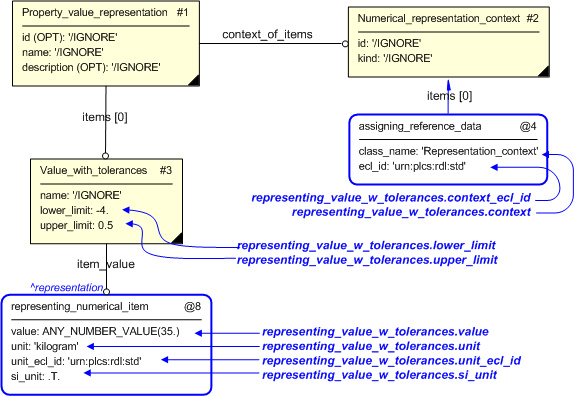
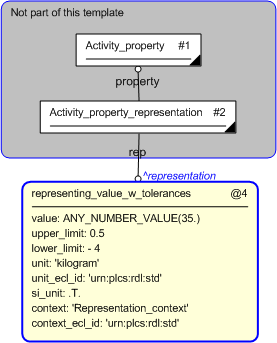
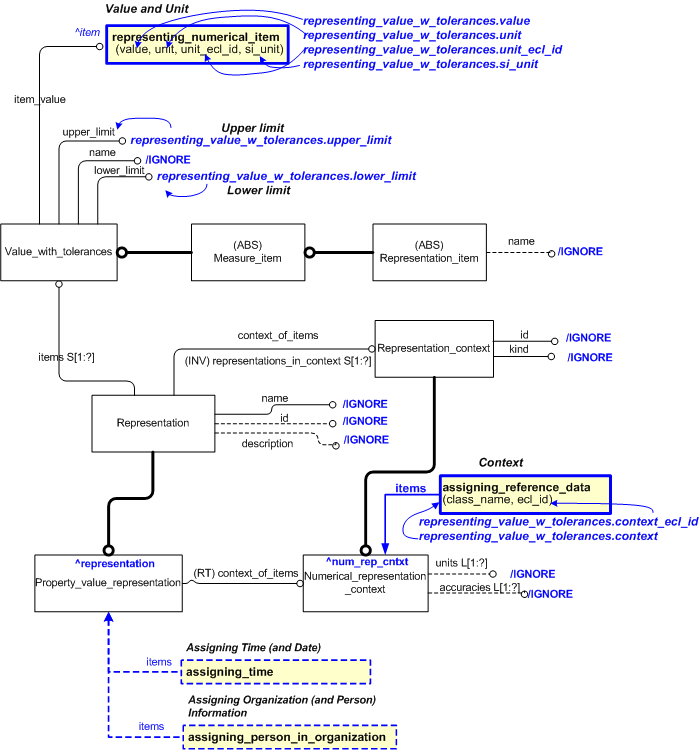
NOTE this characterization is optional.
Time (and dates) can be associated with the assignment of a property value representation as shown in Figure 5, by using the templates assigning_time. An example of this is provided below.
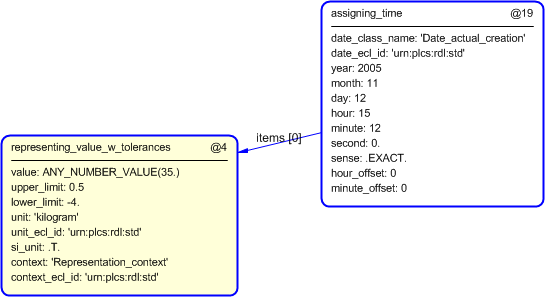
The date of creation of the property value representation is represented by using the template assigning_time to assign a date and time to Property_value_representation (reference parameter ^representation in template representing_value_w_tolerances). The date and time assignment is classified as: "Date actual creation" (urn:plcs:rdl:std:Date actual creation) to indicate that it is the date (and time) when the property value representation was actually created. This is illustrated in Figure 6.
Other dates may be assigned instead.
NOTE this characterization is optional.
An Organization (or a Person_in_organization) can be associated with the property value representation (see the ^representation reference parameter), as in Figure 5. The creating organization is represented by using the template assigning_organization or assigning_person_in_organization assigned to Property_value_representation (reference parameter ^representation in template representing_value_w_tolerances). The assignment of the organization (Organization_or_person_in_organization_assignment) is classified as: "Creator of" (urn:plcs:rdl:std:Creator of) to indicate that this organization created the property value representation. This is illustrated in Figure 7.
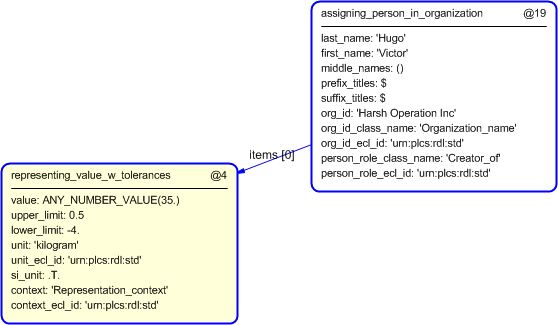
Other roles of an organization with regard to a property value representation may be assigned instead.
© OASIS 2010 — All rights reserved